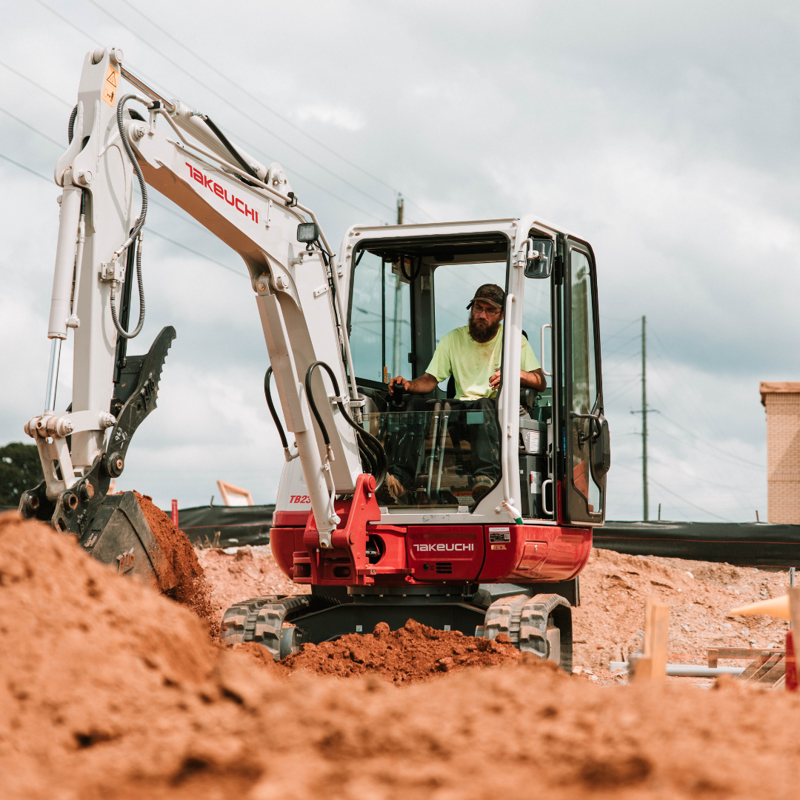Busy construction sites present a unique set of challenges for machine operators. Multiple trades working in close proximity, tight schedules, and constant movement of people and materials mean that safety must be a top priority at all times. Excavators are among the most powerful and versatile machines on site, but they also carry significant risks if not used correctly.
Whether you are operating a compact model or a larger unit, following proven safety practices will help protect you, your co-workers, and the project as a whole. If you are considering a takeuchi excavator for your next project, understanding safe operation techniques is just as important as choosing the right machine.
1. Conduct Pre-Start Inspections Every Day
Before starting work, a full visual and functional inspection should be carried out. This includes:
- Checking fluid levels, including engine oil, hydraulic oil and coolant
- Inspecting tracks or tyres for damage or excessive wear
- Looking for hydraulic leaks or loose fittings
- Testing lights, horns and warning alarms
- Confirming that all safety guards and covers are secure
Taking time for a thorough inspection reduces the risk of mechanical failure during operation and ensures the machine is ready for a busy work environment.
2. Maintain Clear Communication with Ground Personnel
On an active job site, good communication between the excavator operator and ground crew is essential. Use agreed hand signals or two-way radios to avoid misunderstandings, especially when visibility is limited.
If your takeuchi excavator has a reversing camera or proximity alert system, use it in combination with spotters to prevent accidents when manoeuvring in congested areas.
3. Be Aware of Your Surroundings at All Times
With multiple trades and vehicles operating simultaneously, situational awareness is vital. Always:
- Check for workers, vehicles, and obstacles before swinging the boom
- Keep a safe distance from overhead power lines and underground utilities
- Avoid blind spots by using mirrors and cameras frequently
- Slow down when working near pedestrian routes or site access points
Maintaining a 360-degree awareness zone around your excavator significantly reduces the risk of collisions.
4. Follow Load and Stability Guidelines
Every excavator has a safe working load capacity and stability limits that must be respected. Overloading or operating on steep, unstable ground can cause the machine to tip or lose control.
Toyota Takeuchi models are engineered for stability and precision, but operators must always:
- Keep loads low while travelling
- Avoid sudden movements with a full bucket
- Operate at reduced speed when handling heavy materials
- Position the machine on stable, level ground whenever possible
5. Use the Right Attachment for the Task
Attachments increase the versatility of a takeuchi excavator, but they must be matched to the job and installed correctly. Ensure:
- Attachments are compatible with the machine’s hydraulic system and capacity
- Quick hitches are locked and secured before operation
- Wear parts such as teeth or cutting edges are in good condition
- The attachment is operated within its designed limits
Using the wrong attachment or one in poor condition can compromise safety and efficiency.
6. Respect Site Traffic Management Plans
Most busy job sites have established traffic flow and designated operating zones. Stick to these plans to minimise interference with other plant and personnel. When entering or exiting an active work zone:
- Wait for clearance from site supervisors or traffic controllers
- Sound your horn when approaching blind corners or intersections
- Follow speed limits within the site
Traffic management is critical to preventing accidents involving multiple machines.
7. Shut Down Safely at the End of a Shift
At the end of the workday or when leaving the machine unattended:
- Park on level ground with the bucket lowered
- Engage the parking brake
- Turn off the engine and remove the key
- Secure the cab to prevent unauthorised access
A proper shutdown helps maintain security and reduces the risk of hazards after hours.
Safe operation of an excavator in a high-traffic construction environment relies on a combination of equipment checks, operator awareness, and adherence to site procedures. Toyota Takeuchi excavators are built with features that support operator safety, including excellent visibility, responsive controls, and robust stability, but these advantages are only maximised when paired with disciplined work habits.
If you are looking for a takeuchi excavator that delivers performance, reliability, and safety on busy job sites, visit www.toyotatakeuchi.com.au/excavators/ to explore the full range and speak with an expert today.




